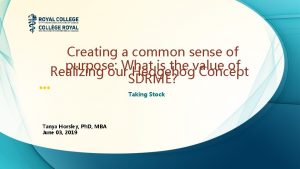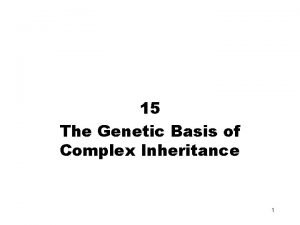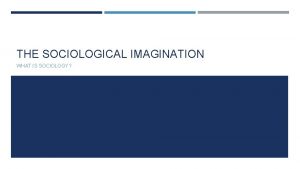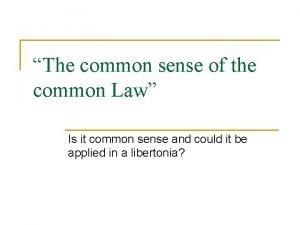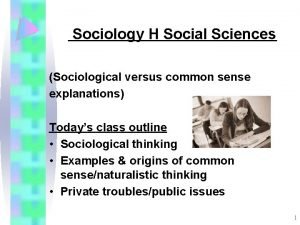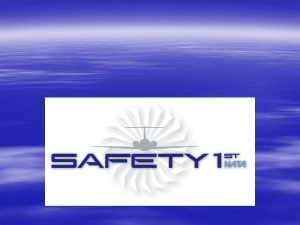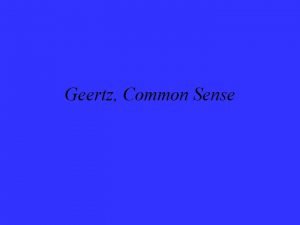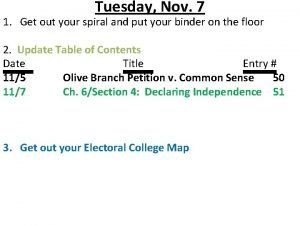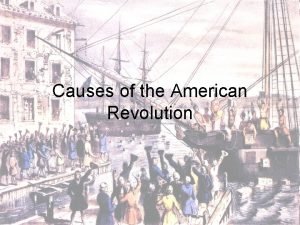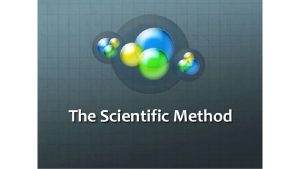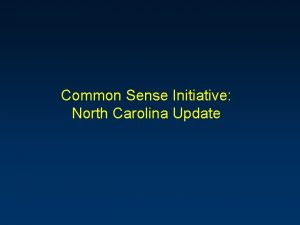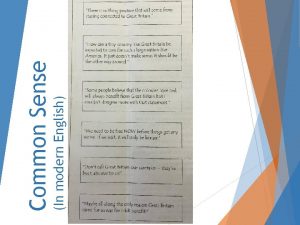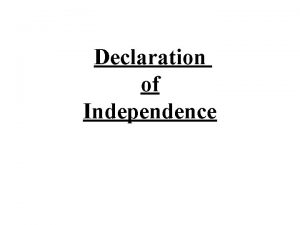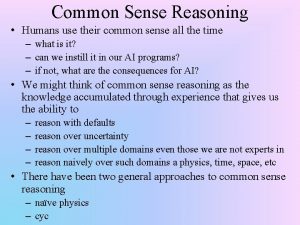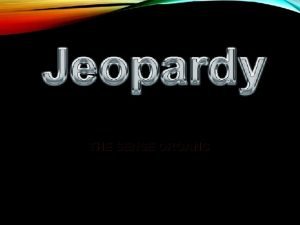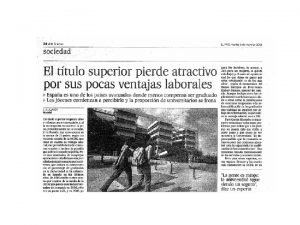Creating a common sense of purpose What is












- Slides: 12

Creating a common sense of purpose: What is the value of Realizing our Hedgehog Concept SDRME? • • • Tanya Horsley, Ph. D, MBA June 03, 2019 Taking Stock

Context • SDRME struggling with an identity crisis • We want to ‘do stuff’ but for purpose, to what end, and with what? • Many ideas – how to activate? • What is our ‘hedgehog concept’ and how do we frame that concept into value?

Objectives • To determine what we want to accomplish as an organization and the concrete action steps needed to accomplish our collective goals. • During this discussion we will tackle questions such as: • What do I expect from SDRME? What is my SDRME membership doing to advance my institution? Who are our stakeholders? What is SDRME’s competitive advantage? What opportunities/threats should SDRME consider when developing its strategy? 3

Revolution required: • As companies grow – greater strategy -aligned efficiencies required; • Strong management leadership necessary, financial controls, humanresource/skill-shift, additional capital, new business techniques/operations. Evolution 1: • Founders entrepreneurial / visionaries • Communication frequent / informal • Small group working hard / moderate gains • Activities often driven by market rather than strategy External Trends / Practices Greiner Curve / Maturity Model Greiner LE. (1997)

Greater Alignment & Integration Operational inefficiencies Growth Strategic direction? * Distributed / inconsistent capital SDRME Current State Assessment

SWOT Analysis • SWOT, stands for Strengths, Weaknesses, Opportunities, and Threats, • Is a strategic planning technique used to help a person or organization identify strengths, weaknesses, opportunities, and threats related to business competition or project planning. • Ask & answer questions to generate meaningful information for each category to make the tool useful and identify their competitive advantage. 6

SWOT • A SWOT analysis can be used to: • Explore new solutions to problems • Identify barriers that will limit goals/objectives • Decide on direction that will be most effective • Reveal possibilities and limitations for change • To revise plans to best navigate systems, communities, and organizations • As a brainstorming and recording device as a means of communication • To enhance "credibility of interpretation" to be used in presentation to leaders or key supporters. 7

SWOT Analysis • Analysis may view the internal factors as strengths or as weaknesses depending upon their effect on the organization's objectives. The factors may include all of the 4 Ps as well as personnel, finance, manufacturing capabilities, and so on. • The external factors may include macroeconomic matters, technological change, legislation, and sociocultural changes, as well as changes in the marketplace or in competitive position. • The results are often presented in the form of a matrix. 8

Interpreting SWOT • The degree to which the internal environment of the firm matches with the external environment is expressed by the concept of strategic fit. • Authentic, honest, and agreement re: identification of SWOTs is important because it inform later steps in planning to achieve the organizations’ objective. • Decide whether the objective is actually attainable, given the SWOTs. If the objective is not attainable, they must select a different objective and repeat the process. 9

The Exercise • Groups of 4 (you will be assigned) • • Group 1 = strengths Group 2 = weaknesses Group 3 = opportunities Group 4 = threats • 10 -minutes to list and discuss each entry • Choose a recorded and reporter - 3 minutes reporting back by each group • Facilitated discussion Paul H. 10

10 Minutes (Taking Stock) • Group 1 Strengths: characteristics of the business or project that give it an advantage over others. • Group 2 Weaknesses: characteristics of the business that place the business or project at a disadvantage relative to others. • Group 3 Opportunities: elements in the environment that the business or project could exploit to its advantage. • Group 4 Threats: elements in the environment that could cause trouble for the business or project. 11

Thank You thorsley@royalcollege. ca / researchunit@royalcollege. ca
 Sdrme
Sdrme Narrow sense heritability vs broad sense heritability
Narrow sense heritability vs broad sense heritability Narrow sense heritability vs broad sense heritability
Narrow sense heritability vs broad sense heritability What is the author's purpose? *
What is the author's purpose? * Is sociology based on common sense
Is sociology based on common sense Qqqnn
Qqqnn Examples of common sense and sociological explanations
Examples of common sense and sociological explanations Right attitude and common sense
Right attitude and common sense Common sense examples
Common sense examples Olive branch petition and common sense venn diagram
Olive branch petition and common sense venn diagram Venn diagram of olive branch petition and common sense
Venn diagram of olive branch petition and common sense Sociology and common sense
Sociology and common sense Common sense is published
Common sense is published
